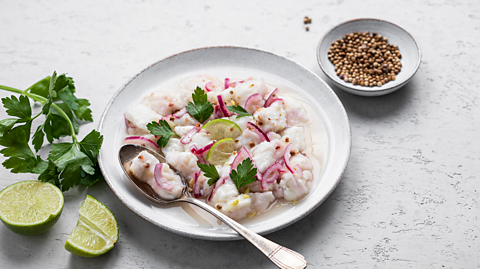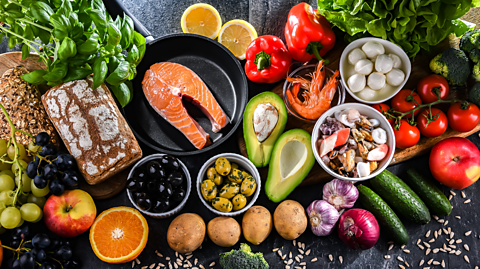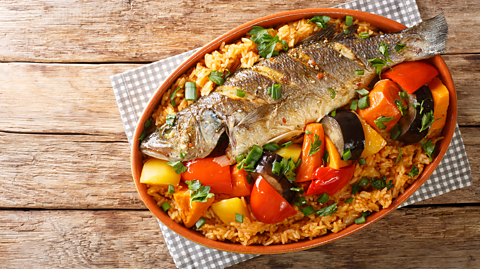Food is essential to our survival, but it is also intertwined with our identities, values and creativity.
In 2003, the UNESCO Intangible Cultural Heritage of Humanity list was established to protect and preserve a range of social practices, from craftsmanship to festive events - and of course, food traditions.
Many culinary delights have achieved UNESCO status, including the Neapolitan pizza of Italy and the baguette of France. But which other delicacies and food practices have made the list?

Ceviche
A combination of raw fish marinated in lime and locally grown produce is the key to making ceviche, also known as cebiche and seviche, a famed Peruvian dish.
A recent addition to the UNESCO list, ceviche was inducted in 2023, where it was recognised for the specialist practices and knowledge needed to prepare the delicacy. These culinary techniques are typically shared within families and have been passed down for generations.
When it isn’t being eaten at home, the dish is often served in traditional spaces called cevicherías. It is also a prominent feature of many Peruvian celebrations and in particular, the festivity of Saint Peter, patron saint of artisanal fishers.
The concept of the ceviche is so old that no recipes for the earliest version of the meal exist, but archaeological findings suggest the dish could be up to 3,000 years old.

Hawker culture in Singapore
Hawker culture is a term used to describe the community of vendors who cook and sell meals across Singapore. Serving as the nation's community dining rooms, cuisine varies from Chinese, Indian to Malay specialities.
The hawker centres are celebrated for attracting a wealth of hungry customers from a diverse range of social backgrounds. The practice can be tracked back as far as the 1800s, from the early migrant population who sold quick, affordable meals from makeshift stalls. These stalls could be found in town squares, parks and street pavements.
Inducted in 2020 for the role it's played in enhancing community interactions and increasing the country’s social fabric, the tradition has evolved significantly over the years and is still prominent across the region. Some of Singapore’s oldest hawkers started their practice in the 1960s.
In 2016, a hawker stall called Hawker Chan in Singapore became the cheapest Michelin-star restaurant in the world. At the time their signature chicken rice dish sold for the equivalent of £1.76 per portion.

The Mediterranean diet
Hailed for its emphasis on plant-based foods and healthy fats, the Mediterranean diet originated in the food cultures of ancient civilizations surrounding the The region of lands around the Mediterranean Sea.
The diet commonly includes foods such as whole grains, legumes, fish, eggs, fresh fruits and vegetables as well as olive oil. It also includes a moderate amount of dairy and limited consumption of meat and saturated fat, like butter.
Modelled from the eating patterns of people living in the Mediterranean, it is linked with seven countries: Greece, Cyprus, Spain, Croatia, Italy, Morocco and Portugal.
The diet was inducted by UNESCO in 2013 and is celebrated for its social values, such as hospitality, neighbourliness and creativity. It is also attributed with bringing communities together in cultural spaces, festivals and celebrations.

Ceebu jën
Thieboudienne, known as ceebu jën in the Wolof is the national language of Senegal. It is spoken by over 5 million people in Senegal, the Gambia and Mauritania. language, is a traditional West African dish that joined the UNESCO food heritage list in 2021. Described as a culinary art, ceebu jën is believed to have its roots in the fishing communities of the Island of Saint-Louis in Senegal.
Recipes for the meal differ across regions, but it usually consists of fish, rice and seasonal vegetables such as onions, garlic, paper, tomatoes, sweet potato and okra. The methods and techniques used in the preparation and cooking of the dish are frequently handed down from mother to daughter.
It is commonly eaten by hand in most families, while cutlery is often used in restaurant settings.
The delicacy is also tied to specific culinary and cultural etiquette. For example, when eating ceebu jën it is forbidden to sit with a raised knee. In addition to this, the bowl must be held with the left hand and grains of rice shouldn’t be dropped while eating.
This article was published in April 2024
Pizza around the world
To celebrate World Pizza Day, ≥…»ÀøÏ ÷ Bitesize explores the ways countries have adapted one of our favourite meals

Food and drink which can claim a stamp of authenticity
How sourdough bread, matcha tea, watercress and parmesan cheese can get people talking about the 'right' way to produce it

Five of the most remarkable railway stations in the world
Climb aboard as we explore some of the world's most incredible train destinations
